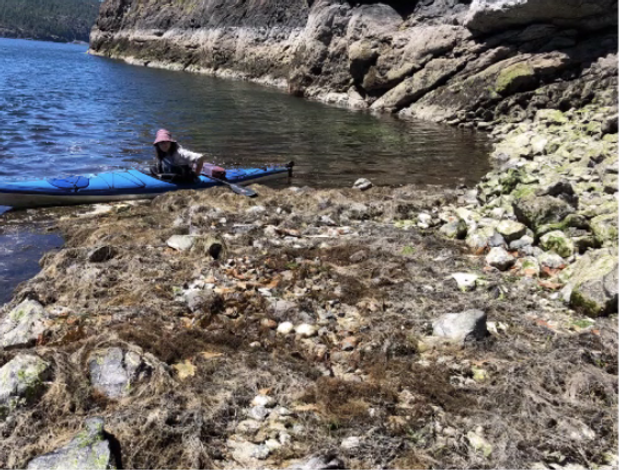
Based on ethnographic accounts and archaeological observations, four species of bivalves were of particular importance to coastal First Nations: butter clams (Saxidomus gigantea), littleneck clams (Leukoma staminea), cockles (Clinocardium nuttallii), and horse clams (Tresus capax). They were eaten fresh or smoked and dried for later consumption or trade. As local clam gatherers are well aware, each species has different preferred growing conditions (substrate, tidal elevation, burrowing depth), which influences their accessibility to human harvesters, their suitability for cultivation in clam gardens, and their resilience to extreme climatic events.

Nicole Smith
While all four species can be found in clam gardens, in our experience, the beach terrace and associated shell middens are dominated by butter clams and littleneck clams, the dominant bivalves harvested from most clam gardens. Unlike cockles, both species thrive in coarse sediments, characteristic of clam gardens. Furthermore, horse clams tend to grow in the low intertidal and more commonly in the shallow subtidal zone. Thus, they would only be accessible to harvesters for limited periods during the lowest low tides.

Dana Lepofsky
Small clam garden (~3 x 5 meters) in the Strait of Georgia. This garden sits very low in the intertidal and may have been used to cultivate horse clams. It is currently covered by the invasive Sargassum muticum seaweed as well as sea lettuce (Ulva lactuca) and rockweed (Fucus gardneri) – a sign that the garden is no longer tended.
Also explore...




